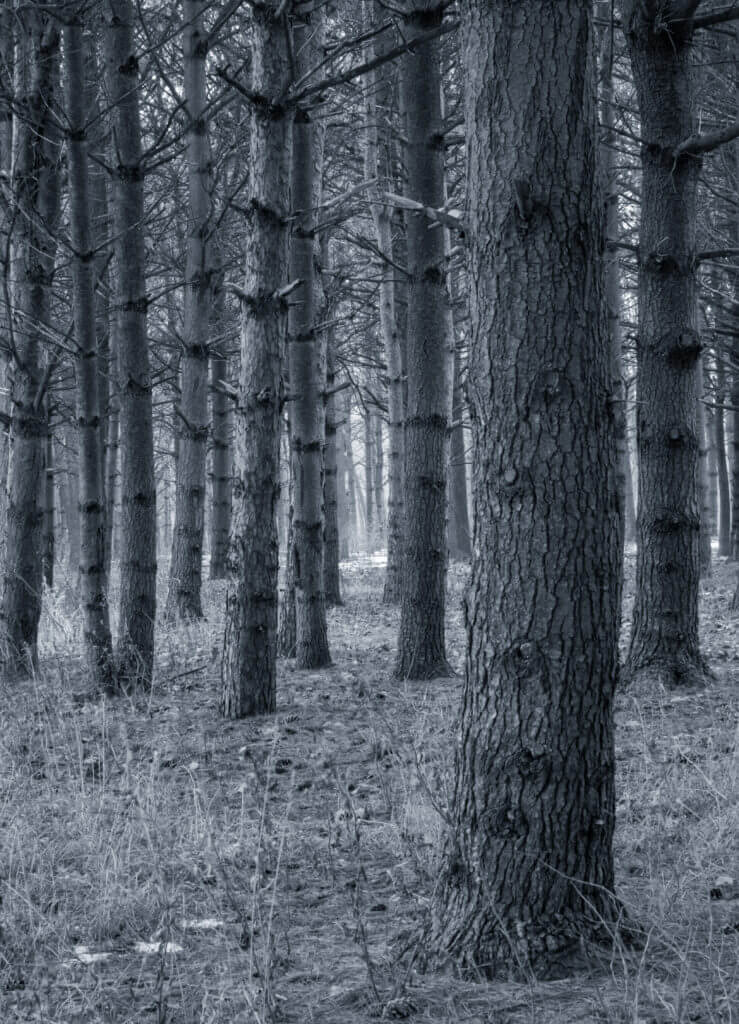Forest fragmentation

As I’ve alluded to in other columns, I consider forest fragmentation to be one of the biggest threats to our forests. Forest fragmentation is the process by which large areas (“blocks”) of forestland are split into smaller pieces by human development and infrastructure, usually roads, driveways and residential or commercial development. While it may not be obvious to most of us, this process has a huge influence on the way our forests work and our ability to manage them and, over time, can have a significant effect on the health of our forests and the culture, character and ecology of our communities.
First, let’s remember how forests benefit us; they provide the scenic backdrop for life in Vermont, recreational opportunities, an important tourism economy. They also produce wood products and maple syrup—local, renewable resources—that support rural economies and our working landscape. They do all this while providing tons of benefits “behind the scenes,” cleaning our air and water, providing wildlife habitat, sequestering and storing carbon… The list goes on. Forest fragmentation threatens these benefits, which depend on forests being healthy and our ability to responsibly manage them, ultimately threatening our quality of life.
Wildlife move across the landscape to satisfy their needs for food, water, cover and reproduction, often requiring several different habitats at different times. While some species, like deer, are relatively resilient to habitat fragmentation and development, others, like black bear, require large areas of unfragmented “interior” habitat, and/or cannot easily cross roads and developed areas. To these species, a house or driveway can cut them off from important habitat, limiting their ability to survive and reproduce.
Forest fragmentation influences other aspects of forest ecology, primarily through “edge effects,” the impacts of the unnatural boundary between forests and open/developed areas. While they may not seem dramatic to laypeople, “edges” have been shown to change growing conditions for trees and plants, favor invasive exotic plants and impact wildlife hundreds of feet into the forest. The 2015 Vermont Forest Fragmentation Report, prepared by the Department of Forests, Parks and Recreation pursuant to Act 118 of 2014 and submitted to the Vermont Legislature, suggests that a home site has ecological impacts to an approximately 30-acre area around it.
As forests are divided and developed, our ability to manage them can be diminished or lost. This means that landowners cannot proactively address forest health and wildlife habitat concerns or harvest local, renewable forest resources for personal use or to offset property taxes and management expenses. This latter factor may lead to more development and fragmentation as landowners subdivide or develop their land to afford these costs.
Forest fragmentation and its impacts are real, measurable and observable over time; the accumulation of many seemingly insignificant decisions made by landowners (to subdivide a lot, build a road or driveway, etc.) create a broader problem. Addressing forest fragmentation means evolving how we develop our communities, but it doesn’t mean “no development.” Encouraging denser development in town and village centers and discouraging the subdivision and development of intact forest blocks goes a long way toward protecting forests from fragmentation.
Act 171, which the Vermont Legislature passed in 2016, requires municipalities to address the protection of forest blocks and habitat connectors. Most towns have a Town Plan, a document that defines rules for development, in addition to a Planning Commission, a group of appointed volunteers overseeing the development and implementation of that plan. If forest fragmentation is a concern to you, consider getting involved in the public planning process in your town or serving on the Planning Commission.
One of the challenges of managing Vermont’s forests, which are 80% privately-owned, is respecting landowners’ rights while recognizing that privately owned forests have a huge public impact; on our shared environment, quality of life and the culture and character of our state. While addressing forest fragmentation means evolving in how we view development, I believe we can do it in a way that provides a higher quality of life and more opportunity to our communities.
For more information, see: The 2015 Forest Fragmentation Report, created by Vermont’s Department of Forests, Parks and Recreation, Guidance from the Vermont Agency of Natural Resources (ANR) on complying with Act 171. Priority forest blocks, wildlife road crossings and other features are identified on BioFinder, a streaming map service provided by the State of Vermont.
Ethan Tapper is the Chittenden County Forester. He can be reached by email, by phone at (802) 585-9099, or at his office at 111 West Street, Essex Junction.

